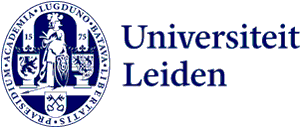
Biological Origami at molecular level: folding a single protein
Human cells are protecting their proteins from unfolding and aggregating. That's what biophysicist Alireza Mashaghi and his team discovered after seven years of in-depth research into the folding mechanisms of proteins. With an unprecedented approach, the team was able to study the folding of a single protein molecule.
Proteins are fundamental building blocks of life. These complex molecules do most of the work in our cells. To do their job properly, each protein must be folded into a specific structure. And that's where things sometimes go wrong. If proteins somehow unfold, for example, because of disease, they lose their function or lump together. Understanding the mechanisms behind the folding and stability of proteins is therefore crucial for developing potential new treatments.
How does a protein unfolds under stress?
'We wanted to observe how a single protein unfolds when it's experiencing stress in the cellular environment,’ explains Barbara Scalvini, one of the researchers. She and her colleagues developed a new approach combining optical tweezers (see box) and circuit topology: a system to determine and classify the shape of proteins.
With this, they studied a protein in a cytosolic solution – a close approximation of the complex cytoplasmic matrix found within living cells. Scalvini: ‘This allowed us firstly to explore how the cellular environment influences the unfolding pathway of a protein. And secondly, to evaluate the resulting protein shape.’
Tweezing with beams of light
Optical tweezers serve as actual tweezers, but on a microscopic scale. It consists of a highly focused light beam that uses light to manipulate objects as small as a single atom. The attractive or repulsive forces provided by this beam can hold and move a microscopic particle.
Read more: Using tweezers of light to study the misfolding proteins of muscular diseases.
Protective powers
The researchers unveiled a previously unknown protective effect of the cellular environment: it seems to protect the proteins against unfolding and aggregating. Scalvini: ‘We used the optical tweezers to pull the proteins by their ends, mimicking natural unfolding. We noticed that a part of it would stay folded, and that we needed more force to completely unfold it. This suggests that the molecular interactions within the cell have a stabilising effect.’
Group leader Alireza: Mashaghi ‘When a cell experiences stress, a protein can unfold to a completely unfolded chain. Once that has happened, it's very hard to reverse. But we noticed the cytoplasm puts a break on this process, not allowing the unfolding to go all the way. This protects the proteins and ensures a proper functionality, and also makes it easier for proteins to refold once the stress in resolved.’

Bridging gaps between the lab and the real world
Mashaghi calls the study a significant advancement in the field of biophysics. ‘We are unravelling the intricate relationship between protein folding and the cellular environment. Our results pave the way for future studies in more realistic biological environments. This will help us bridge the gap between lab studies and the real world; between fundamental biophysics and medicine.’
'Making the cell environment work in our favour'
The findings hold immense promise for numerous areas of research. Mashaghi: ‘Think of drug development and understanding the mechanisms of various diseases caused by protein misfolding, such as neurodegenerative disorders or muscular dystrophies. With further research, we may be able to harness the protective properties of the cell's environment. How wonderful would it be if we could use those properties to design new therapies for diseases like that!’
